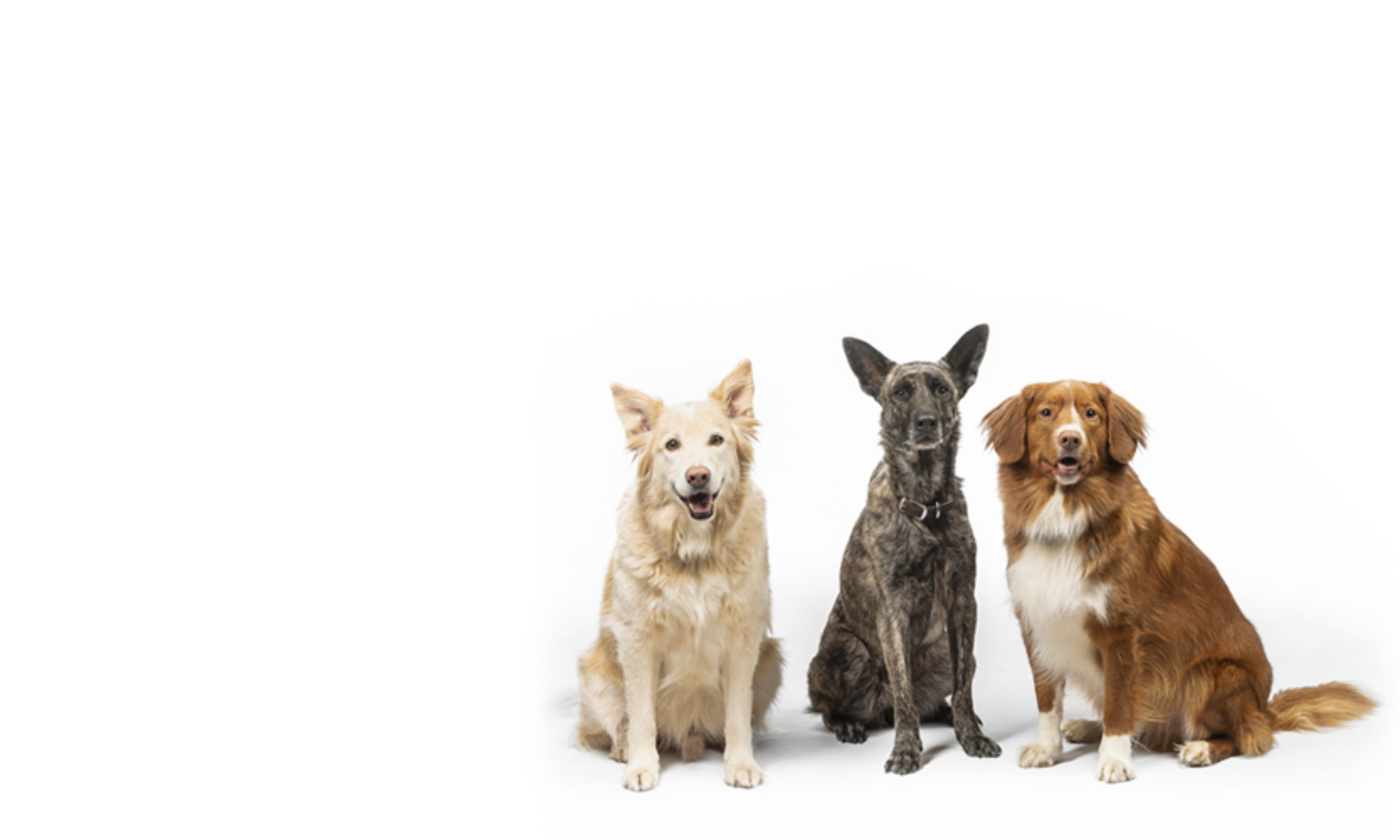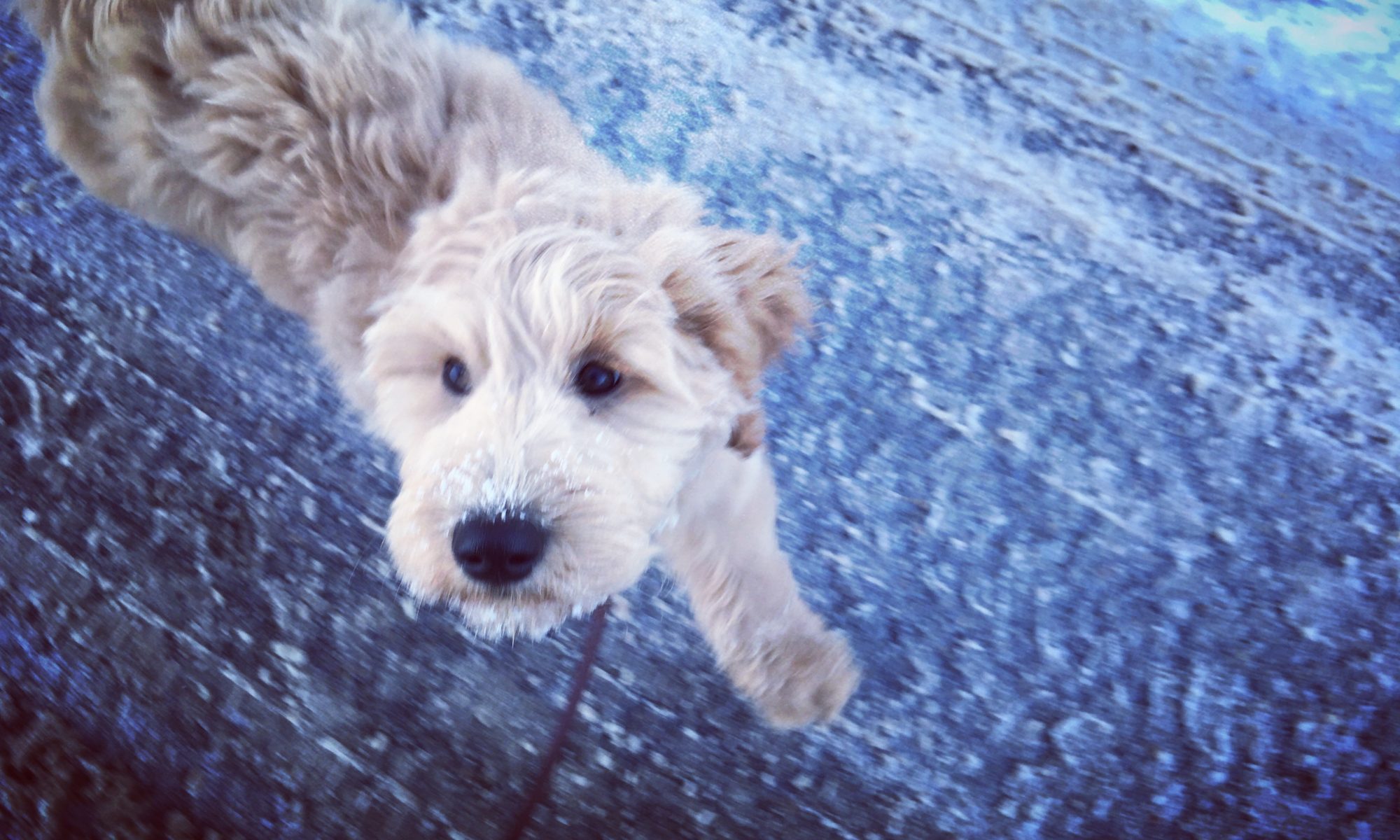The arrival of Spring is the perfect opportunity to head out with your dog after a long winter and explore the world…but that peaceful stroll can turn frustrating quickly if your dog pulls, strains and jumps as you hang on for dear life!
Loose leash walking is a hard skill as it involves deliberate practice and multiple components of obedience training. It can be an even bigger challenge when you factor in ‘city living’ distractions. Buses, cars, bikes and other dogs are always going to exist and pop out of nowhere on your walks and for your safety and theirs, dogs of all sizes should remain calm in the presence of them.

The most common complaint with walking is excessive pulling and excitable behaviours around distractions such as people and other dogs. These behaviours not only present a safety issue for owners, but they can also lead to less walking overall. A frustrating 30 minute walk daily can sour the relationship you have with your dog and make you less inclined to walk them. You may seek alternative methods of exercise but this is a solution we never want to see because loose leash walking is a life skill and can absolutely be taught with the correct foundations.
As we stated earlier, walking is hard and it is not a skill that can be achieved overnight. Unlike your Sits, Downs, and Targets, walking requires many layers of proofing; that is, practicing in various environments and distractions, with a consistent level of reward and structure. Despite this fact the question “what should I do when my dog pulls?” is usually the most asked in training classes.
There are many ways to interrupt pulling, but this blog post will focus instead on what to do when your dog is not pulling. By making this your primary objective and goal, you become proactive in your dog’s training. Rather than waiting for pulling to occur on a walk and training your dog then, you will anticipate their pulling and start to teach an alternative behaviour.
THE FOUNDATION OF LOOSE LEASH WALKING
The ‘secret’ to teaching your dog to walk well on leash lays in teaching solid foundation skills. These skills are a culmination of impulse control, handler awareness, management, and engagement and focus. Together, they create incompatible behaviours to pulling. If your dog has some measure of impulse control, they are less likely to pull. If your dog is aware of you and their environment, you can anticipate times when they pull. Finally if your dog can focus and redirect their attention to you willingly, you have a very useful way to structure your walk.
The assumption should always be that dogs will pull – they are animals after all. The training we want focus on is teaching the dog a measure of control that inhibits excessive pulling. So, the first step towards stopping your dog pulling is to start Engagement Training.
Most people understand focus to be your dog’s ability to direct their attention towards you (and we will touch base on this skill in our next blog!). Engagement training, however, is a relatively new concept in companion training. Engagement is your dog’s willingness to work with you (and in this case, check in with you), ideally without the obvious presence of rewards.
The premise is this: without hot dogs and cheese, will my dog Ebony still check in with me and want to do work with me? Can she do this in a new environment? Can she do this with other dogs walking by her, or people? The answer is yes, because I have built her engagement incrementally over the years. I have taught her that doing stuff with me is fun and rewarding, and something to look forward to. First, we used food and secondary rewards such as toys and then the environment. Eventually, the work itself became rewarding through repetition and practice.
How does this help our walking? Well, engagement is a foundation skill. If you teach your dog that checking in with you on walks and in outdoor environments are good things, you are already being proactive about where their attention is wandering before it leads to excessive pulling. When you throw in hard distractions such as another dog that your pup could potentially pull towards, you are already ahead of the game and can set up the scenario to work to your advantage.
If you have taught your dog to frequently check in with you to the point that its muscle memory and fun for the dog to perform, suddenly walking becomes more about that activity. By practicing this, you have a skill to fall back on when distractions begin to creep up on your walk. You are no longer solely dealing with ‘a dog that pulls’ – Instead, you are putting the majority of your time and effort in to teaching them better skills that help your relationship become stronger.
Engagement training differs from ‘focus work’ because it is not a cued skill, it is simply based on creating a fun dynamic between you and your dog. While Focus and Attention are excellent tools to use in your walking, building engagement lays the groundwork for those very skills to be solidified later on.
Practicing engagement for beginners will need to start outside of your walks, but in the meantime while your dog learns, you should also be practicing management!
THE ROLE OF MANAGEMENT ON WALKS
The other part of the ‘waking equation’ would entail management, and ensuring your dog is set up to succeed. If you are aware of her tendency to pull towards strangers, for example, this is a perfect opportunity to either practice your training skills or manage your dog.
If you have not brought appropriate rewards to train your dog or are unprepared for these scenarios, then you will mange the situation by stepping aside as strangers walk by (for example), or by creating distance by crossing the street. The last thing we want to do is set up our dogs to fail by attempting to walk too closely to their kryptonite and risk them practicing inappropriate behaviours. It is always best to keep your training as clear as possible for your dog and especially clear on what behaviours aren’t allowed (such as jumping up on people).
SO, IF MY DOG PULLS, WHAT DO I DO?
You start by teaching engagement in easy locations!
This is the fun part! Starting your dog on engagement drills is best in the home first and then an open area like your yard. The basic premise is that we want to reward the dog and make it fun when they ‘engage’ with us, and move with us. This can mean glancing at us, in direct or direct eye contact, looking up at us, or turning their body towards us.
To make the exercise easier, we would recommend starting this on leash but try to think of the leash as a guide rather than a preventative measure. You want your dog to choose to engage with you over the environment whether you have the leash or not in the future.
THE DRILL
- Start indoors with your dog, and have a handful of rewards ready to go. Move 3-5 steps away from them, and if they follow you mark and reward them.
- Try to feed them as they move with you – backwards, then forwards.
- Allow them to break that focus to glance around and do whatever they like. Its important not to ‘force’ your dog to check in with you, as the power of this skill comes from the dog ‘choosing’ to do it and subsequently being reinforced for it. This means no verbal commands or cues such as their name or ‘come’
- As soon as they check back in after taking a break, mark and reward again, and take a few steps backwards with your dog.
- As you progress through the exercise, you should notice your dog choosing YOU over the environment more and more, and you can walk in multiple directions with their sustained engagement. This is good!
If you think about it this way – what incentive do dogs have to check in with us when the world is so exciting? Most dogs usually just want to explore the world with their senses, so its important to remember that teaching them to engage with us is a process and should involve reinforcement. The more you practice, the more progress you should see over time. We like to recommend you use a higher value reward for these drills, especially if you are working outdoors. Most dogs tend to stop eating ‘regular’ rewards in more distracting environments – this is normal and part of the learning process.
Keep your training sessions short for this exercise. Five to ten minutes of consistent reinforcement is sufficient in new environments. Remember we want to avoid flooding them and overwhelming the dog.

IMPLEMENTING DELIBERATE PRACTICE
The main ingredient to successful loose leash walking is practice. This means that outside of your dog’s usual activity you will need to practice building their engagement.
An easy way to break the training down?
- If you walk your dog 2Xa day, try to practice this drill 2X as well, before or after your walk.
- Practice these drills in the yard before meal times
- Grab a handful of rewards and head out to your driveway, and practice the skills there for a few minutes.
Engagement training doesn’t just help your walking! It is the foundation for every life skill you want your dog to learn and it’s the key to getting your dog to want to work with you and learn with you.
Happy Training!

